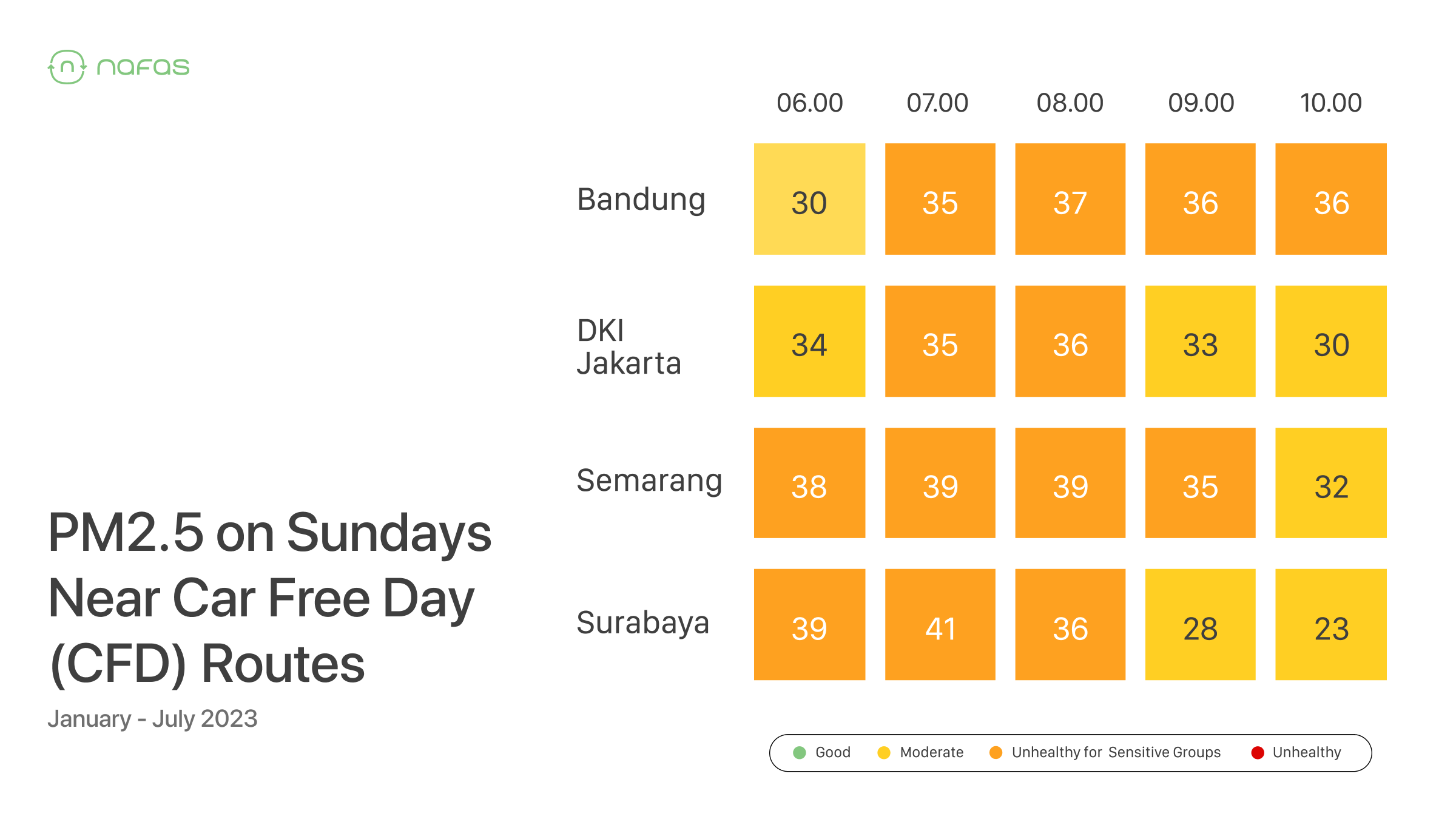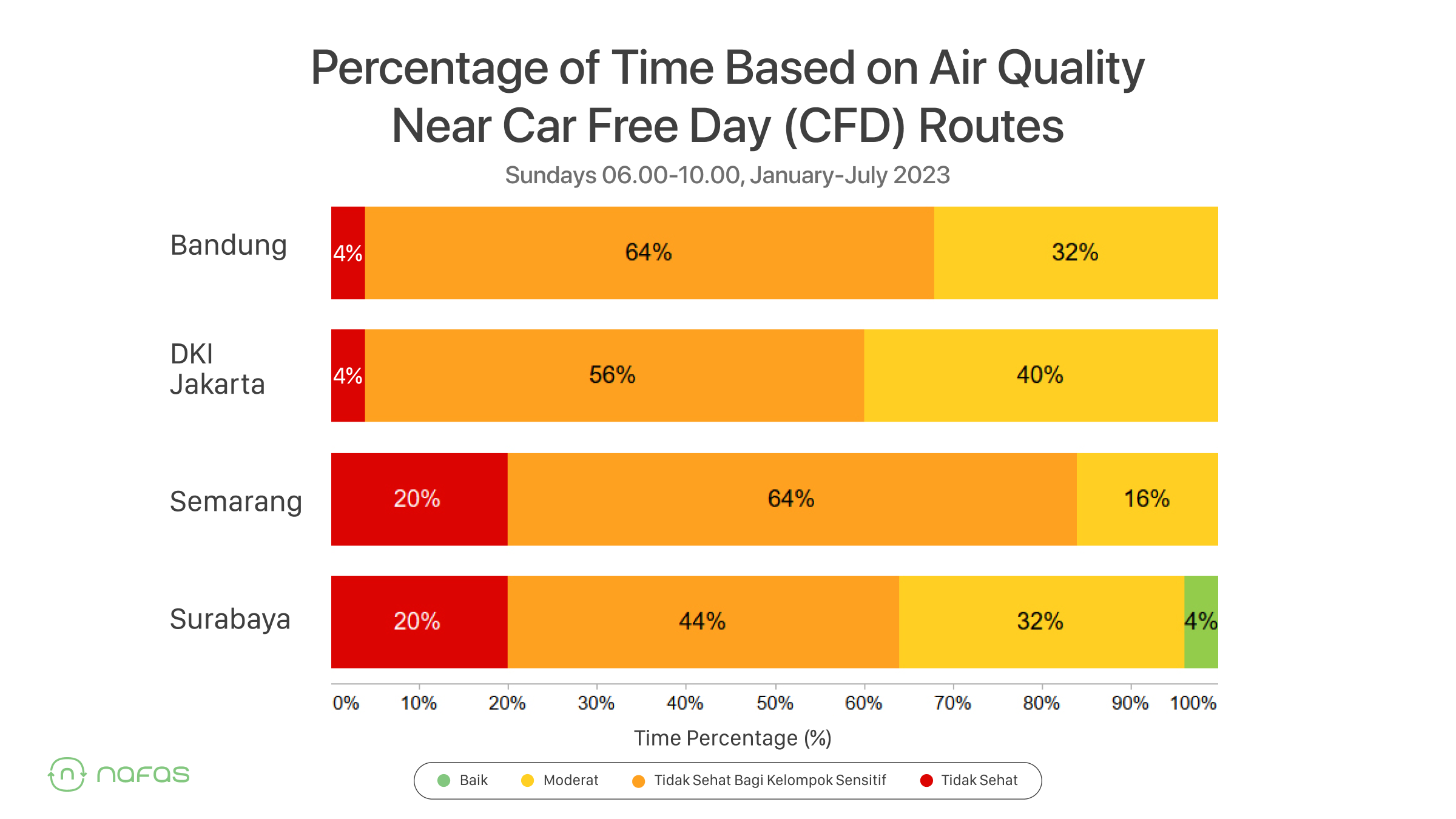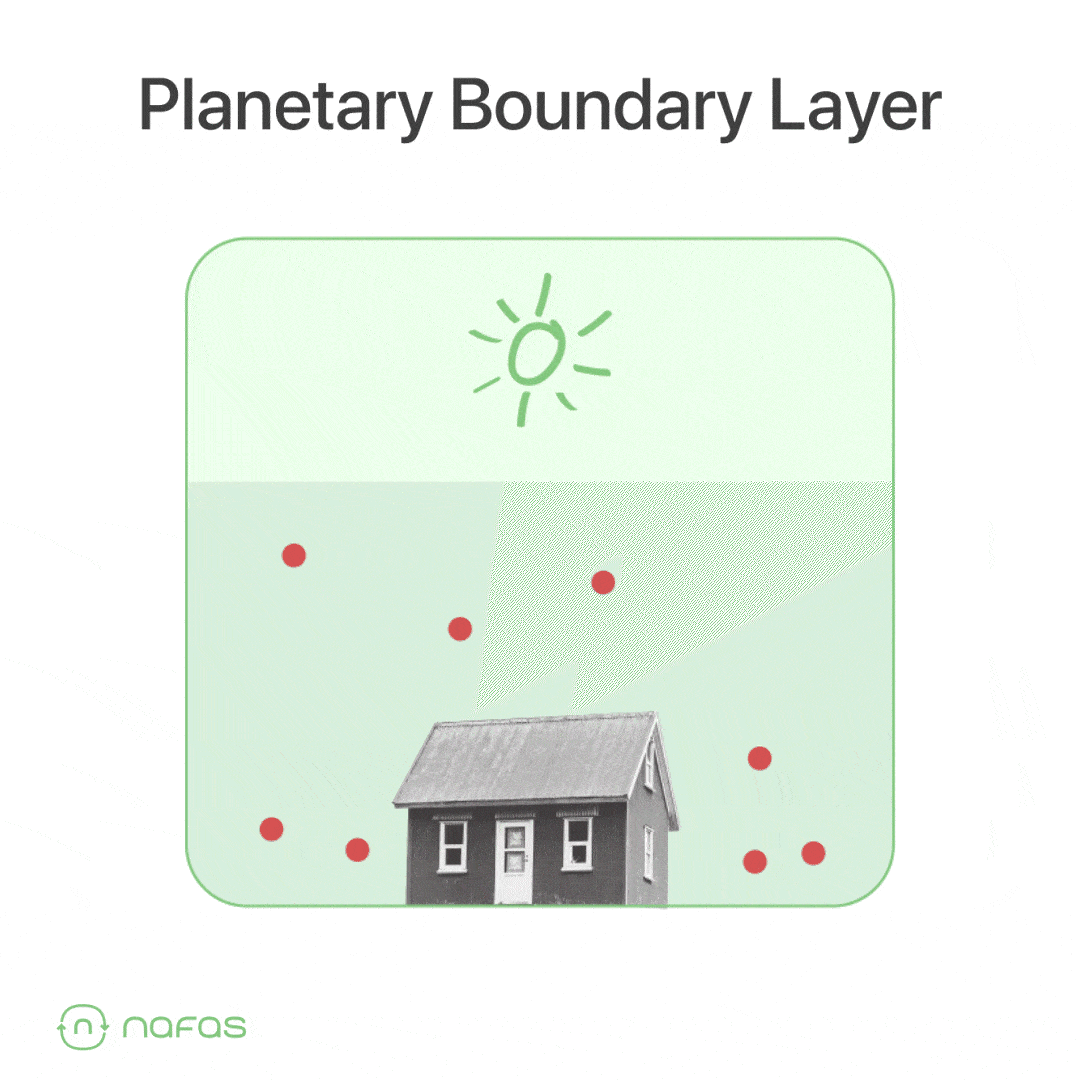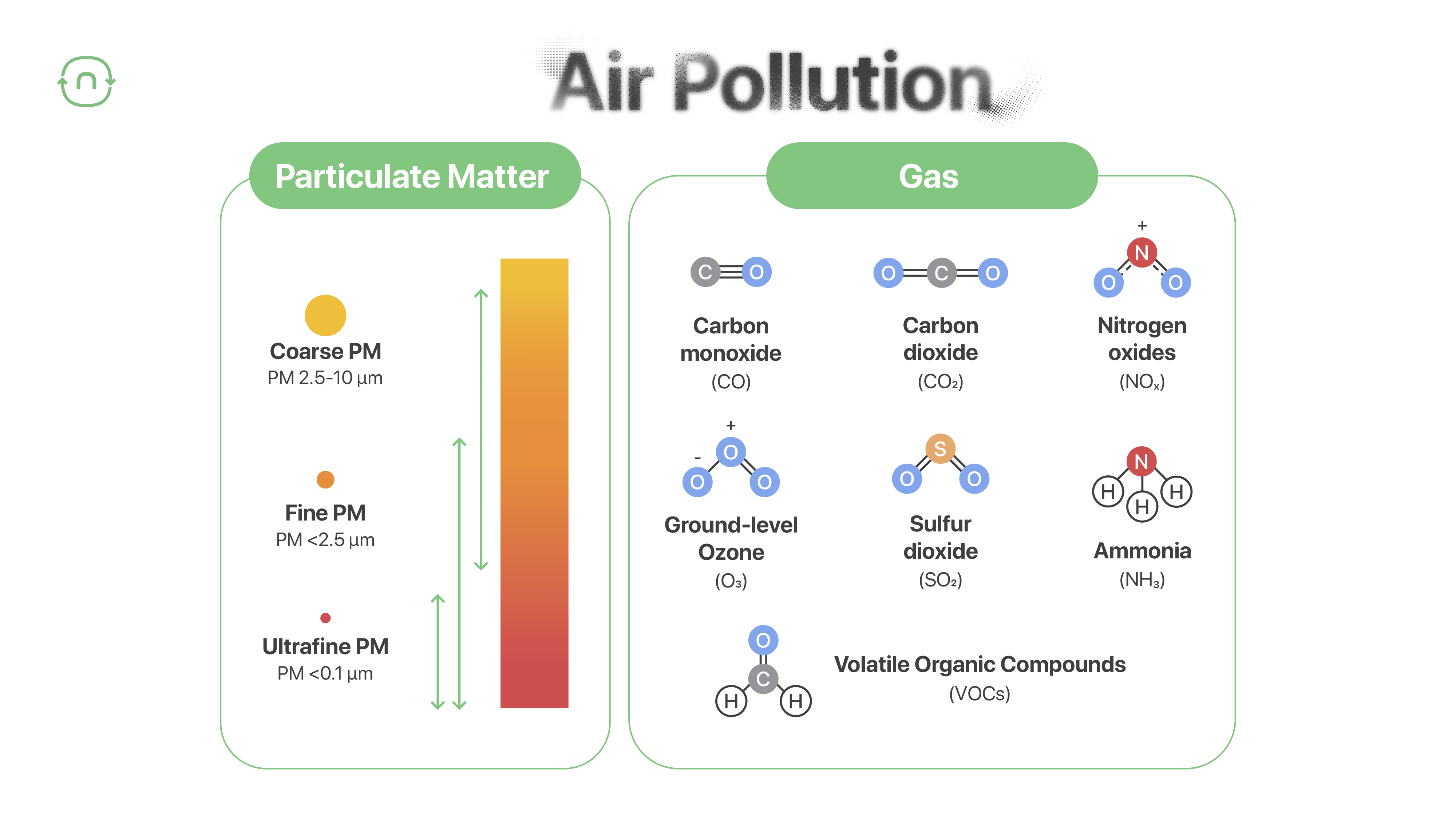Does Car-Free Day Truly Equal Cleaner Air?
Coming to the city hall to do some exercise on a car-free day is definitely a lovely way to spend a Sunday morning. No hustle and bustle of vehicles, free of black smoke, makes a car-free day an opportunity for city dwellers to enjoy the fresh air. But is the air really that fresh and clean? Sadly, the answer is not always.
To see the facts, let's see the data together!
Air quality at car-free day locations in some cities is unhealthy for sensitive groups
The figure below shows data on the amount of pollution every Sunday from 6 to 10 a.m. near car-free day locations in four cities –Semarang, Bandung, DKI Jakarta, and Surabaya. From January to July 2023, it appears that the amount of air pollution at car-free day times in Semarang and Bandung is quite high, making it unhealthy for sensitive groups, including children, the elderly, and people with respiratory diseases. In DKI Jakarta and Surabaya, the air quality is arguably better than in Semarang.
Now, take a look at this more detailed air quality data!
From the four cities above, the Nafas Team tried to break down the air quality at every hour during the car-free day. Based on the data above, it can be seen that the air quality during car-free days is dominated by unhealthy air for sensitive groups.
We try to visualize the number of hours with unhealthy air quality for sensitive groups with the following figure.
From the figure above, it appears to be true that air quality during car free day is dominated by unhealthy air for sensitive groups in all four cities. In fact, in Semarang and Surabaya, there are 20% of hours when the air quality in the morning is completely unhealthy for everyone, not just sensitive groups.
Maybe the data above makes you ask, "Why is the air quality still poor, even though the source (i.e. vehicles) is not operating?"
Planetary boundary layer plays a role in morning air quality
Yup, the planetary boundary layer appears to be one of the factors influencing air quality in a specific location. The planetary boundary layer, also known as the atmospheric boundary layer, is the lowest part of the Earth's atmosphere where the Earth's surface interacts with the atmosphere. It extends from the Earth's surface to a height of a few hundred meters to a few kilometers. The height varies depending on factors such as weather, time of day, and geographic location.
Generally, this layer is at a low altitude at night. In a nutshell, the lower the altitude, the closer it is to the Earth's surface, right? The close gap between this layer and the earth's surface causes air pollution to not be spread out and tends to accumulate so that the amount of particulates in the air will be more abundant, making the air quality worse. This phenomenon, which generally occurs at night, will persist until the morning, making the air quality in the morning sometimes not so good. Air quality will tend to improve as the afternoon comes, as the planetary boundary layer moves away from the Earth's surface and makes more room for air pollution to scatter.
The planetary boundary layer is not the only cause of bad air quality. The possibility of other hyperlocal pollution sources may also affect the localized pattern of pollution in each region.
Morning air pollution may diminish the benefit of car-free day exercise
Some of us may be confused about the best time to exercise. Many people prefer to exercise in the morning because the air is cleaner and there are fewer vehicle emissions. In addition, exercising on an empty stomach (which typically tends to happen in the morning) can increase postprandial metabolism and lead to burning 20% more body fat.
However, exercising in poor air conditions is not recommended. Exercising makes us breathe faster and take in more air. As a result, more pollutants (PM2.5, CO, NOx, SO₂, and O3) are inhaled in a short period of time.
The Seoul National University study showed that adults (25 to 30 years old) who exercised regularly for 10 years outdoors with PM2.5 above 26 µg/m3 had a 33% higher risk of heart disease than people who did not exercise at all.
Morning air pollution may diminish the benefits of car-free day exercise
There are some steps you can take to avoid exposure to air pollution. You can use the nafas app to monitor the air quality before starting to exercise outside. The nafas application will recommend exercise times based on data to reduce the risk of PM2.5 exposure.
If the outdoor air quality seems to be unhealthy, you can do it indoors. Some indoor exercises, such as yoga, gymnastics, Zumba, and treadmill workouts, can be good options.
In addition, the Nafas team also has some recommendations on what to do when the air is unhealthy:
1. Reduce the duration and intensity of exercise during a car-free day when the air quality is not good.
2. Wear a mask that is comfortable and appropriate for exercise
3. Move your exercise time to the hours when pollution is lower
4. Check gyms/exercise studios with guaranteed healthy indoor air quality at @cleanairzone.id.
✅ Exercising is good but even better when supported by healthy air quality, dear residents! 😉